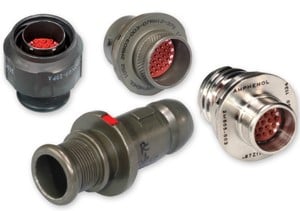Veering away from dog breeds and shampoo, the miniature trend has entered the world of electrical components. Growing demands for lightweight miniature components across automotive, medical and consumer electronics have driven the trend across the industry, with businesses harnessing the opportunity to develop their component designs to improve performance and sustainability. Here, Mark Coley, Senior Industrial Product Champion at electrical connector specialist PEI-Genesis, explores the increased demand for miniaturized lightweight electronic components and how they are reshaping designs.
How Miniature Connectors Encourage Eco-Friendly Electronics Production
There is no doubt that our electronic devices are getting smaller. Take our smart phones, once the size of a brick they're now compact pocket devices no bigger than 170mm. Components must now fit into minimized spaces while maintaining high performance, durability, and reliability.
To reach a balance, manufacturers must embrace advanced engineering, innovative materials and design techniques. They must also consider industry-specific requirements when it comes to miniaturization, for example high-resistance polymers allow sterilization resistance in medical applications. This is crucial as they must withstand repeated exposure to temperatures reaching 250°C and chemical cleaning processes.
In the automotive industry, the surge in vehicle electrification and autonomous driver systems call for more lightweight, high-power connectors. Integrating multiple power sources into one connector allows for a high-current system which reduces weight without compromising high power, often supporting 1000 volts (V).

Materials Matter
The innovation starts with the materials. In miniature connectors, configuration materials must meet specifications that focus on performance, weight, durability and reliability. Due to this, traditional materials used in connectors have been swapped or modified.
Composite materials and polymers have become a popular choice in connector housings and insulation. Composites for instance have the best properties of metals and polymers, being extremely lightweight and having high mechanical strength. They also improve the component's resistance to electromagnetic interference (EMI), which results in consistent optimized performance. For example, the Micro-Miniature D38999 distributed by PEI-Genesis, can have customized shells, which incorporate composite materials and fully complies with MIL-DTL-38999 military standards.
Other innovations include nano-coatings. No thicker than 2 micrometers (µM), they add a microscopic protective layer to a miniature connector and enhance corrosion resistance, conductivity and mechanical durability. These qualities enable smaller, yet still efficient, connectors with longer lifespans, which consequently become more cost-effective solutions.
A Key to Sustainability
Trending miniature connectors have prompted a complete refurbishment in component design, and with this innovation comes opportunities to make the industry more sustainable. It is a shift backed by stringent environmental regulations, corporate sustainability initiatives, and consumer demand for greener electronics.
Manufacturers have been making moves towards Restriction of Hazardous Substances (RoHS) compliant materials, banning metals like lead (Pb), mercury (Hg) and cadmium (Cd) in component production. These are being replaced with silver (Ag) or nickel (Ni) in plating or Tin-Silver-Copper (Sn-Ag-Cu) in soldering, reducing toxicity and making them safer to produce and more environmentally compatible.
Manufacturing techniques have also changed in the name of sustainability. Miniature connectors require precision engineering, rather than traditional machining and molding processes which can lead to excessive material waste. 3D printing and precision injection molding methods used in miniature connector production reduce scrap metal and plastic waste and have been implemented across the industry to make production more sustainable.
High demands serve as the main hurdle for a business's sustainability goals. Some production lines have undergone modifications that reduce power consumption, notably as high-power methods like precision injection molding become more popular. Servo-driven injection molding machines use electricity over hydraulic power, reducing energy consumption by up to 60 per cent.
Factories also continue to seek investments in renewable power including industry leader Manhole, which hosts green factories in Europe running on 100 per cent renewable energy, significantly cutting CO₂ emissions, but still meeting high product demands. This means that connectors like the Amphenol 2M Series Micro-Miniature aligns with the industry's move toward energy-efficient, sustainable connector solutions.
Industry trends constantly open the space for innovation and miniature has not fallen short. Micro connectors have a mighty impact on industry applications thanks to unique developments in connector design whilst simultaneously proposing a route towards more eco-friendly production practices. Moving forward, collaboration across engineering, materials science, and manufacturing will be essential to maintain progress and innovate the separate bodies of miniature and sustainability further.
To learn more about miniature connectors visit www.peigenesis.com, or click the 'Learn More' button below for PEI-Genesis' range of Micro-Miniature Connectors.











